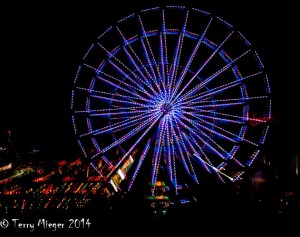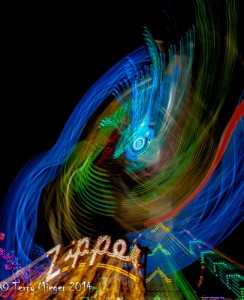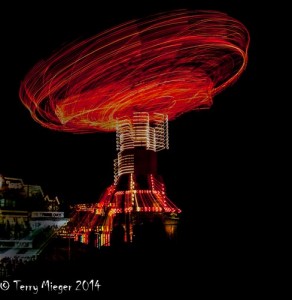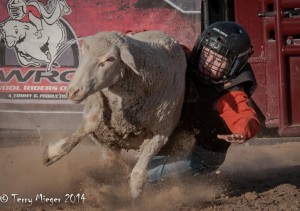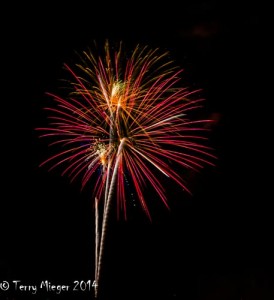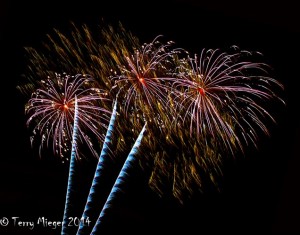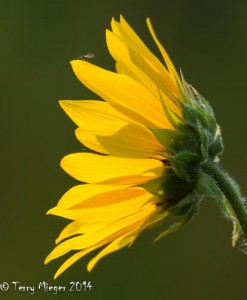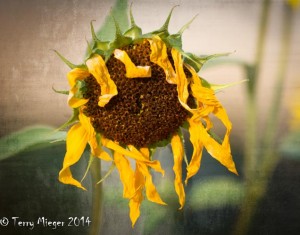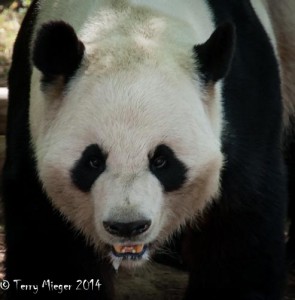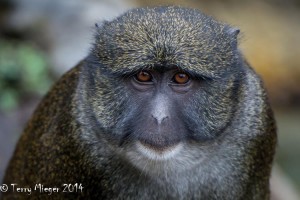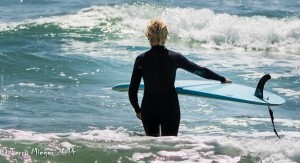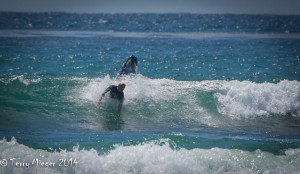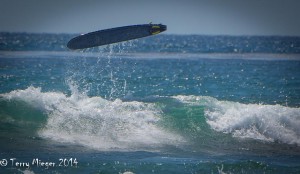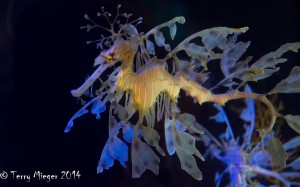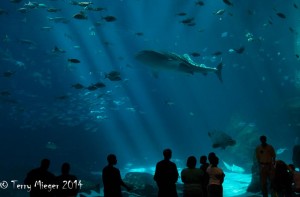Images from the Id – The County Fair # 2 or around and around we go
Actually this could be any time there is a carnival and carnival rides. The upside says a lot of color and action with many chances to be creative. There are people and the possibility of fun night shots. People and midway shots are best later in the afternoon. Be prepared by controlling your camera for the situation. The camera should not dictate or limit your creativity. The after dark photography, when the all of the lights come on, is some of the most fun and challenging work you can do. As always practice, take a lot of images and learn from your successes. There is no such thing as a failure only a step toward success. You want to work toward that picture you have in your mind and what you want others to see. We call that “vision”. Turn off the in-camera noise correction. Use software and shoot RAW of course. These images all require extensive exposure, saturation, contrast work in the computer. Use a tripod.
This is a simple motion shot. Slow shutter to show motion 1/4 sec (For the motion) , f/22( for depth of Field), -1 EV (these scenes are brighter than you think) ISO 800 (needed for the f/22), 22 mm/33 mm (pretty wide)
Something different , Three exposures (done in camera-I love these newer cameras), zoom during the second and third exposures. Each exposure was 4 sec (the camera automatically compensates for the exposure overlap) f/32 (actually needed to get the long exposure), ISO 200
This image takes advantage of the repetitive motion of the Ferris Wheel. Multiple exposures without zooming. Each image 4.0 sec (in this case to replicate the pattern), f/32 (again to get the long exposure) 0 EV, ISO 200 (this is optimum for this camera), 50 mm/75 mm
This is simply zooming during the single long exposure. Remember all of these require a lot of work on the exposure, contrast etc. 4.0 sec, f/32, 0 ev, 50 mm/75mm ISO 200
This one was another multiple exposure (2) each with a long shutter speed but waiting for the ride to tilt during the time between exposures. 3.0 sec, f/11, + 1/2 EV ( I have no idea why), ISO 200, 27 mm/40 mm
Have fun



